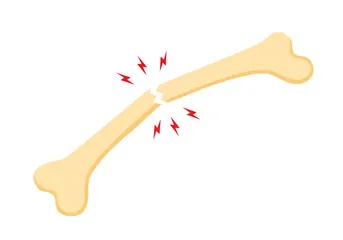
New Study Reveals Alarming Fracture Risks in Cancer Patients: Could FRAX Be the Answer?
2024-11-04
Author: Noah
The Importance of FRAX
FRAX, a widely used Fracture Risk Assessment Tool, estimates the 10-year probability of experiencing major osteoporotic fractures and hip fractures in the general population. However, its effectiveness specifically in cancer patients has been under scrutiny. The results from this study provide compelling evidence that FRAX, when combined with bone mineral density (BMD) data, can deliver accurate predictions for fracture risks in this vulnerable population.
Study Overview
The retrospective cohort study analyzed health data from Manitoba, Canada, spanning from 1987 to March 2021. It included nearly 55,000 residents, with 9,877 individuals diagnosed with cancer and 45,877 without. The team meticulously tracked incident fractures through comprehensive health-care records and utilized the Manitoba BMD Registry to assess bone mineral density.
Group Comparisons
The investigative team found that cancer patients experienced substantially higher rates of major osteoporotic fractures, with 14.5 incidents per 1,000 person-years compared to 12.9 among those without cancer. Additionally, hip fracture rates were also elevated, showing 4.2 incidents per 1,000 person-years in cancer patients versus 3.5 in the general population.
FRAX Effectiveness in Predicting Fractures
Key findings revealed that for cancer patients, the FRAX tool, when used alongside BMD information, was strongly linked to the incidence of major osteoporotic fractures. The hazard ratio indicated that for every standard deviation increase in FRAX scores, there was nearly an 84% increase (HR = 1.84) in the probability of major osteoporotic fractures and a staggering 261% increase (HR = 3.61) for hip fractures.
Conclusion: A lifeline for cancer patients?
The implications of this research are vast and could change the way oncologists approach fracture prevention in patients with cancer. With predictive tools like FRAX, healthcare providers can better stratify risks and implement preventative measures such as lifestyle modifications, medication changes, or enhanced monitoring protocols.
This study sheds light on the critical need to integrate fracture risk assessments into routine cancer care—enabling earlier interventions that could dramatically improve the quality of life for those battling cancer.
Stay tuned for further developments in this vital area of research, as the medical community seeks to uncover new strategies for protecting one of our most vulnerable populations!









 Brasil (PT)
Brasil (PT)
 Canada (EN)
Canada (EN)
 Chile (ES)
Chile (ES)
 España (ES)
España (ES)
 France (FR)
France (FR)
 Hong Kong (EN)
Hong Kong (EN)
 Italia (IT)
Italia (IT)
 日本 (JA)
日本 (JA)
 Magyarország (HU)
Magyarország (HU)
 Norge (NO)
Norge (NO)
 Polska (PL)
Polska (PL)
 Schweiz (DE)
Schweiz (DE)
 Singapore (EN)
Singapore (EN)
 Sverige (SV)
Sverige (SV)
 Suomi (FI)
Suomi (FI)
 Türkiye (TR)
Türkiye (TR)